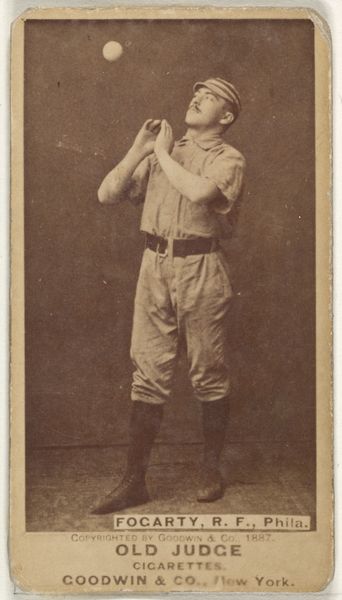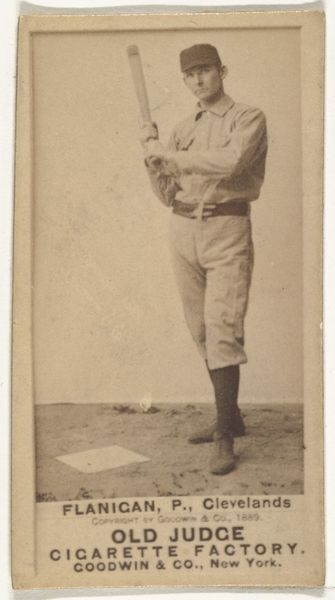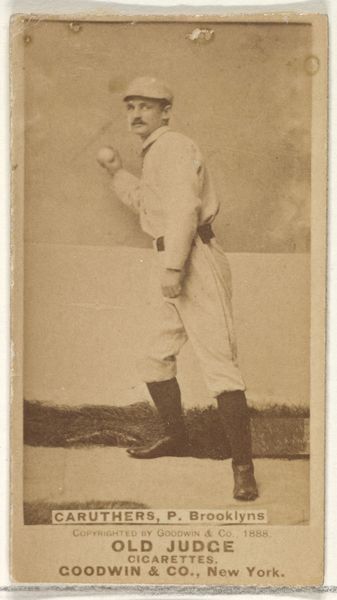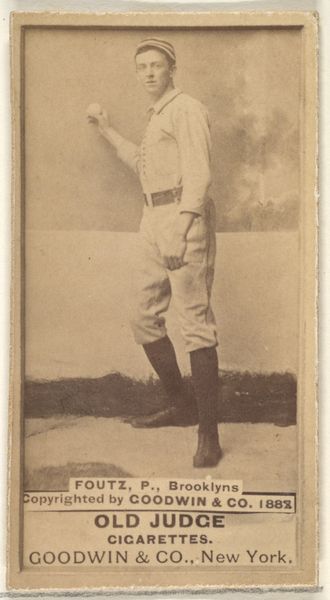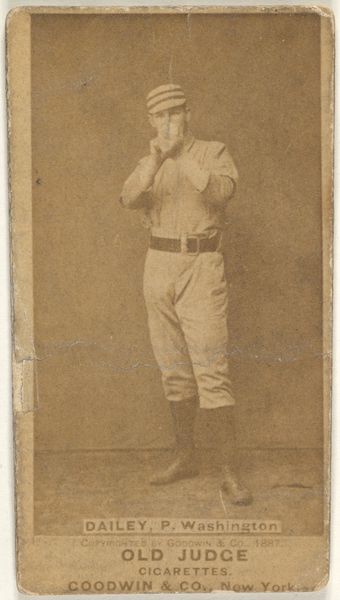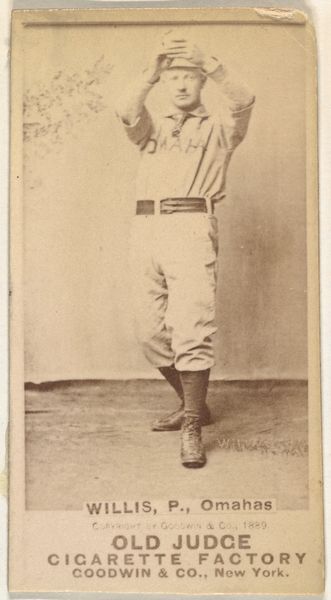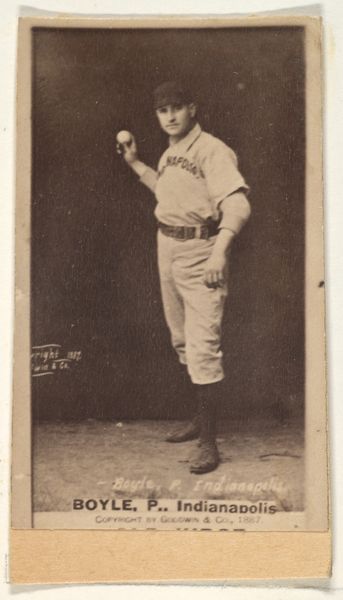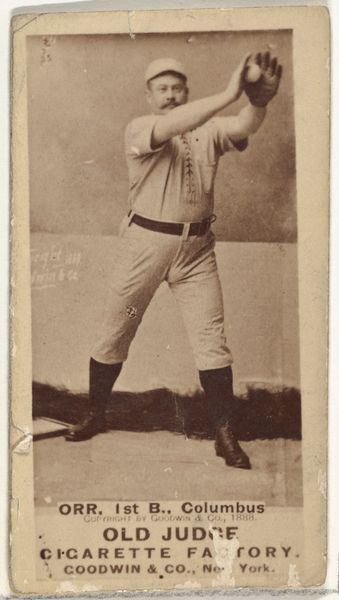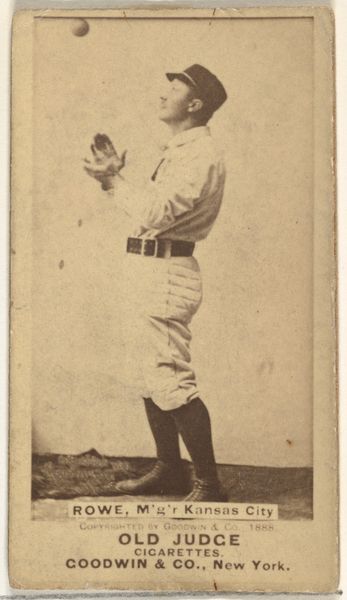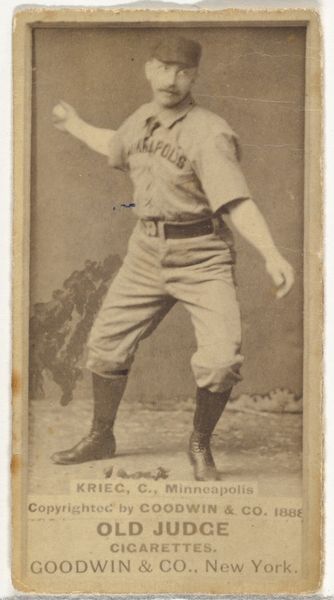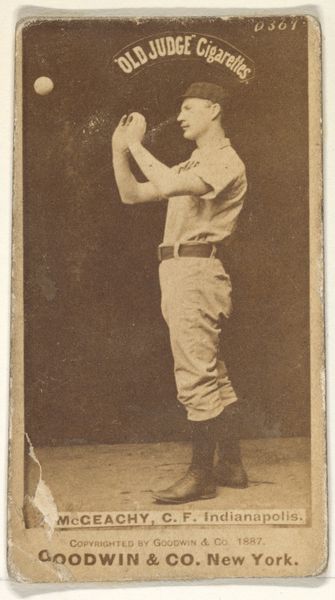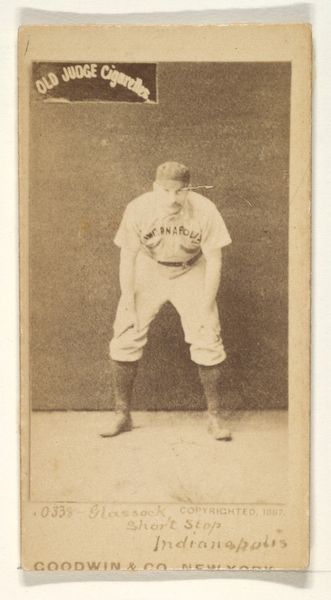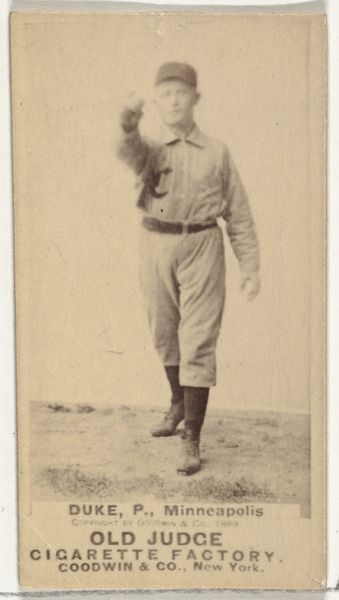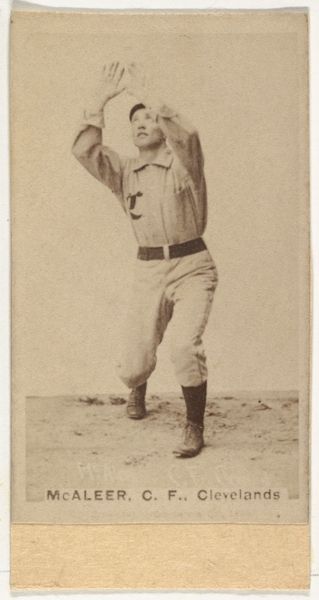
George A. Wood, Left Field, Philadelphia, from the Old Judge series (N172) for Old Judge Cigarettes 1887
0:00
0:00
Dimensions: sheet: 2 11/16 x 1 3/8 in. (6.9 x 3.5 cm)
Copyright: Public Domain
Curator: Looking at "George A. Wood, Left Field, Philadelphia," part of the Old Judge series for Old Judge Cigarettes from 1887, I am immediately drawn to its construction as a cultural artifact. Editor: The sepia tone really gives this photograph a feel of the era. The wear and tear hint at its history as a commercial product and a collectible item. Curator: Absolutely. These cards were produced by Goodwin & Company and distributed with cigarette packs. Wood, captured in mid-motion, isn't merely a sportsman, he’s a symbol intertwined with burgeoning industrial capitalism, tobacco consumption, and emerging ideals of masculinity. Editor: Yes, baseball's rise as a national pastime is completely tied to industrial production and leisure. The materiality of the albumen print itself is interesting. It’s mass-produced, but each has unique variations in tone and surface quality, depending on the labor and processing involved. Curator: And considering portraiture in the 19th century, where photographs held immense social capital, situating it here emphasizes how sport—and its figures—were attaining an unprecedented cultural presence. The Ukiyo-e influence perhaps, brings it to how eastern influences are gaining traction into the modern Western sphere, reflecting a moment where racial and national identities were under constant negotiation. Editor: Absolutely. Also, consider the manufacturing involved. The Goodwin Company, in producing these cards at scale, became a key part of baseball's early promotional ecosystem. The “Old Judge” cigarettes link baseball directly to mass consumption. The placement and marketing have been thoughtfully composed to appeal to its targeted audience. Curator: Indeed. The image's significance transcends sport, offering insight into cultural trends, consumerism, and even early advertising strategies and their intersection with evolving understandings of athleticism and celebrity. Editor: This card reminds me of how intertwined art and commercial activity were in the late 19th century. Considering its production, and consumption tells an important narrative beyond just the image. Curator: Agreed. This image allows us to appreciate how something seemingly simple as a baseball card encapsulates vast narratives about labor, consumerism, and cultural values during a formative era.
Comments
No comments
Be the first to comment and join the conversation on the ultimate creative platform.
